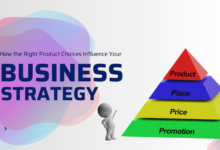Tips for Understanding Your Target Audience

In the fiercely competitive business landscape of today, understanding your target audience is crucial for creating effective marketing strategies. This key insight not only helps to communicate and engage with your prospects better, but it also assists in devising products and services that truly cater to their needs. This task can be daunting, which is why many businesses opt for support from a full-service research marketing company, such as Slice MR, to gain comprehensive knowledge about their target consumers.
A Deep Dive Into Demographics
One of the first steps in understanding your target market involves delving into demographics. This includes information such as age, gender, geographical location, education, occupation, and income level. This demographic information lays the foundation for creating a solid consumer profile, which can guide your marketing strategies.
Understanding the demographics of your target audience provides important insights into their buying behavior. For instance, millennials may prefer purchasing products online, while baby boomers might lean toward physical stores. Different income levels also dictate buying patterns. Higher-income individuals may lean towards luxury goods, while those with a moderate income might prioritize practical and cost-effective options.
Psychographics: Getting Into the Minds of Consumers
Demographics are essential, but they only provide a partial picture of your target audience. For a more in-depth understanding, businesses should explore psychographics—psychological aspects of consumer behavior such as values, interests, attitudes, lifestyle, and personality traits.
These psychological factors influence how consumers perceive a product, brand, or service, and ultimately guide their purchasing decisions. For example, a business that understands its target audience values sustainability will be more successful by promoting eco-friendly products or demonstrating sustainable business practices. In contrast, an audience that values cost-effectiveness would respond better to strategies highlighting affordability and value for money.
Monitoring Consumer Behavior
To truly understand your target audience, businesses need to monitor their behavior regularly. This means tracking how they interact with your brand, products, or services, and observing patterns in their buying habits. In the era of digital transformation, businesses can leverage tools such as Google Analytics or social media insights to monitor consumer behavior online.
Consumer behavior monitoring also involves understanding the customer journey – from initial awareness to the final purchase, including the touchpoints and experiences in between. This comprehension can help businesses optimize each stage of the customer journey to enhance the overall customer experience and build brand loyalty.
Leveraging Feedback and Engaging Directly
There’s no better way to understand your target audience than by communicating with them directly. This can be done through various methods such as surveys, interviews, focus groups, or simply by reading and responding to customer reviews and comments on social media platforms.
Feedback can provide businesses with invaluable insights into what their customers like, dislike, want, or need. Moreover, direct engagement helps build a relationship with your audience, making them feel heard and valued, which ultimately contributes to increased brand loyalty.
Staying Updated with Market Trends
Markets are dynamic, and so are consumer preferences. Businesses that stay updated with the latest market trends can adapt their strategies accordingly and stay ahead of the competition. This may involve staying abreast with emerging technologies, shifts in societal norms and values, changes in laws and regulations, and evolving market conditions.
Building a Deep Connection with Your Target Audience
Understanding your target audience is not a one-time task but an ongoing process that demands constant research, analysis, and adaptation. It’s about more than just knowing who your customers are—it’s about getting into their minds, understanding their desires, their concerns, and their buying behavior, and using that knowledge to build a connection with them.
By delving into demographics, exploring psychographics, monitoring consumer behavior, leveraging feedback, and staying updated with market trends, businesses can effectively cater to their target audience’s needs. This will not only result in increased customer satisfaction and loyalty but also enhance the overall success of your marketing strategies. Remember, a deep connection with your target audience is the cornerstone for long-term business success.
For more in-depth strategies and tactics, check out our comprehensive guide on understanding your target audience.








